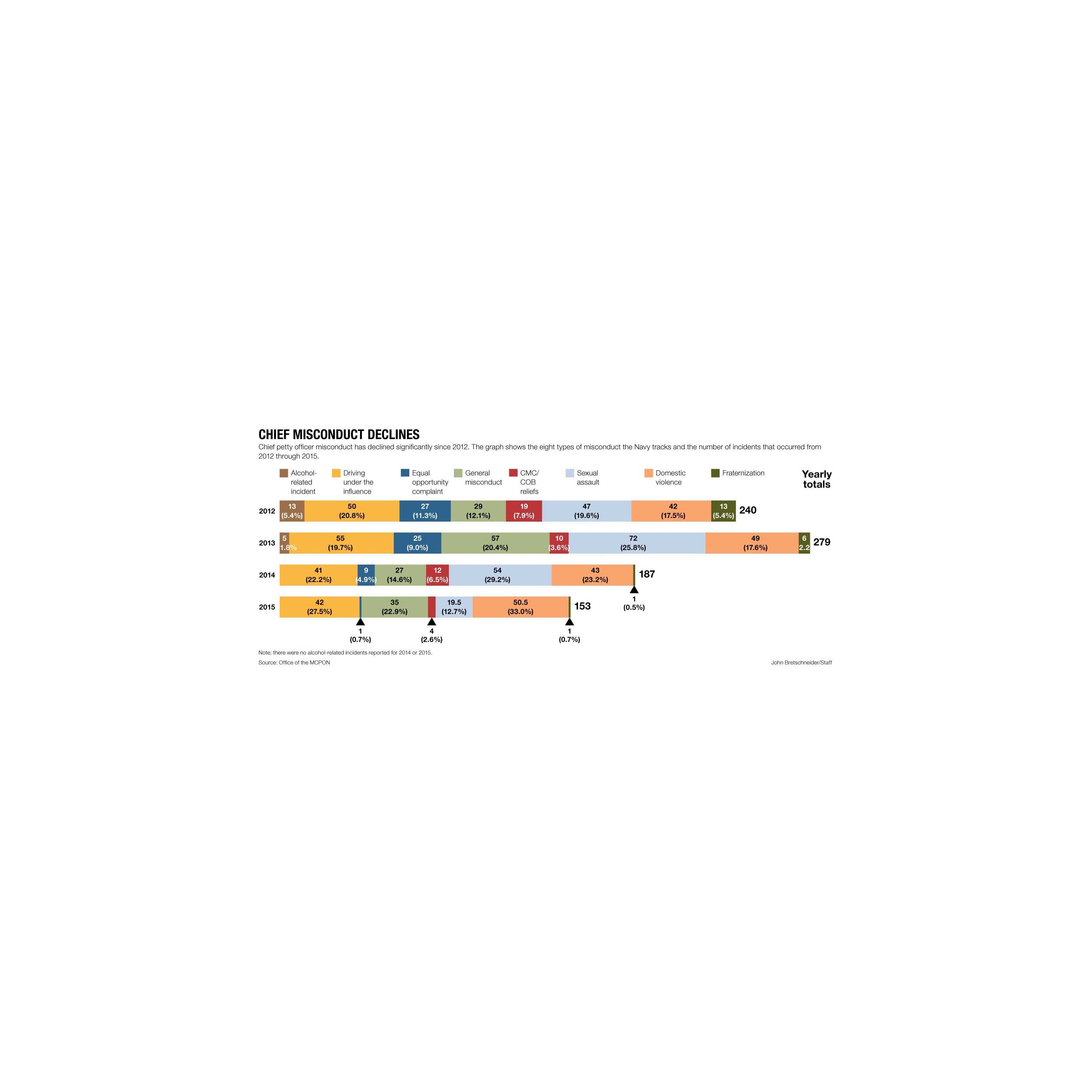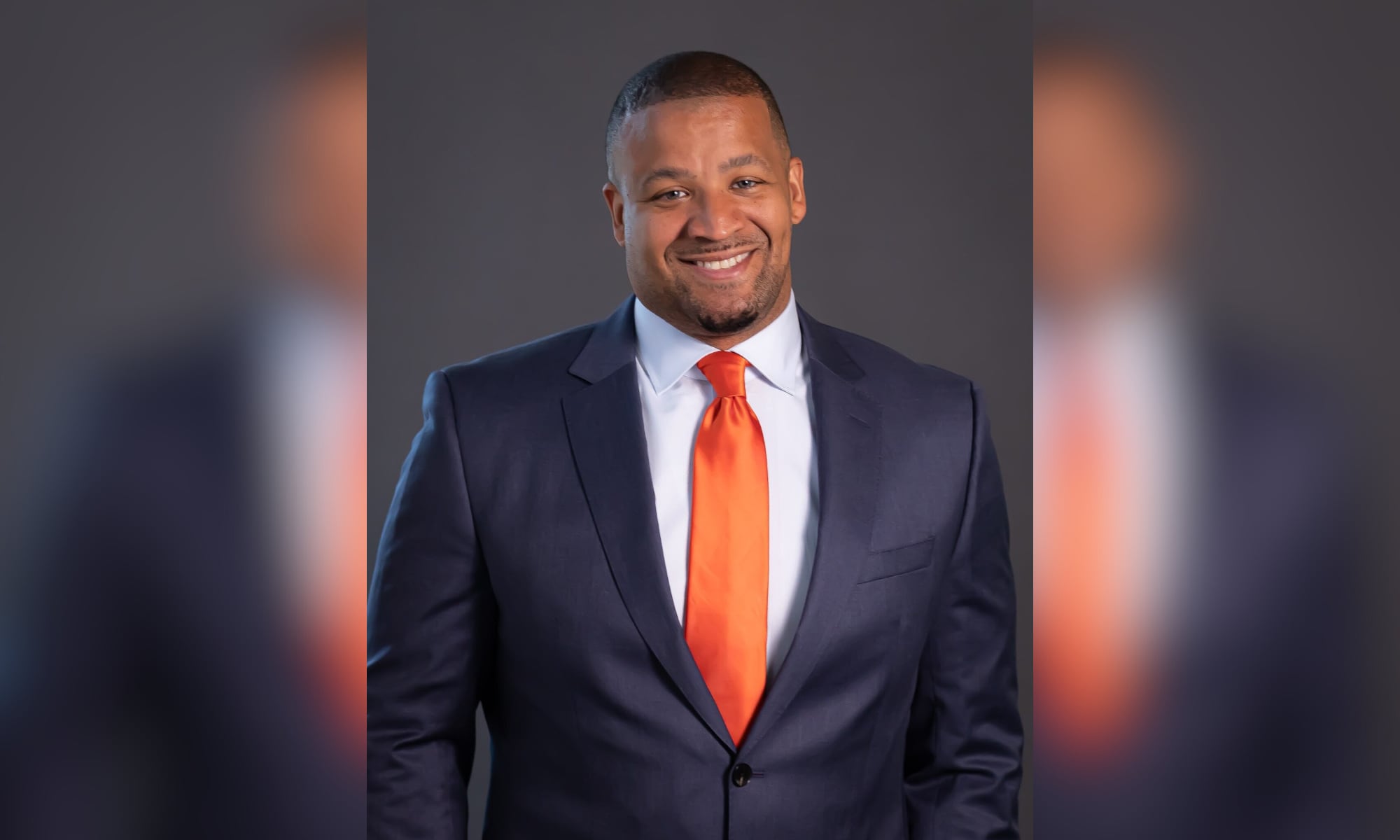Year over year, the number of sacked command master chiefs is dropping.
The number has dropped from 19 in 2012 to eight in 2015, in a sign that overall misconduct is dropping for the senior enlisted leaders in these high-profile positions.
Not only has misconduct dropped among the rank and file of the Navy's collective chief's mess - misconduct and also the numbers of command master chief's getting fired is on the decline , too.
Along with following the misconduct of the masses — it's also been the point of the past two Master Chief Petty Officers the the Navy to put eyes on the Navy's most visible enlisted leaders — command master and senior chief's as well as the more senior force and fleet master chief's, too.
"It’s all about accountability," said Master Chief Petty Officer of the Navy (AW/NAC) Mike Stevens said in a Jan. 29 interview about tracking and releasing information in senior enlisted firings. "As leaders, we are accountable for our actions to those we serve — it’s critically important that our sailors see us as ourselves, as CMCs, being held to the standard that we enforce for everyone else."

Chief petty officer misconduct has declined significantly since 2012. The graph shows the eight types of misconduct the Navy tracks and the number of incidents that occurred from 2012 through 2015.
Photo Credit: Office of the MCPON
But just as with misconduct in the overall chief’s ranks, it’s Only about one percent of of the roughly 750 command master chief’s were removed from their jobs last year. That's not to say, however, that there weren't high-profile cases. A medical facility CMC was canned for drunken antics at a reception for the president of Panama. And Pacific Fleet's top enlisted leader was ousted for breaking travel rules, one of the highest-ranking Navy enlisted fired for cause in Navy history. president. who got in trouble last year to the point they were fired from their jobs.
"Last year, in '15, we relieved eight," Stevens said. You go back a couple of years, we were hovering around 20."
Still, this year is the first year in the single digits since MCPON"s tracking of firings began in 2009. After recent high of 19 reliefs in 2012, it dropped to 10 in 2012. After a slight uptick again to 13 in 2015, last year's eight continued trend downward again.
"Am I satisfied with that?" Stevens continued. "No, I am not, but I recognize that this is something that you have to continue to work at."
What bothers Stevens like his predecessor, MCPON (SS/SW) Rick West before him, is that most the the fact a majority of CMC firings aren’t for poor performance on the job — they’re for misconduct off the job. because of poor decisions made off the job, he said.
Personal misconduct has accounted for the majority of CMC and command senior chief removals in the past two years, according to the According to data provided by the Naval Inspector General each of the last two years a majority of CMC and CSC firings happened for personal and not professional incidents.
Last year, five of the eight firings and it was eight of the 13 in 2014.
Still, it's something, he said, that due to human will be tough to eliminate altogether, either — but still, he said, that remains the goal.
The service began publicizing the names of fired CMCs in 2010, similar to that for commanding officers who've been relieved for personal transgressions or professional lapses. This came about under then-MCPON Rick West, who believed that CMCs must be held to the same level of scrutiny as COs.
Stevens says the key to reducing the number of CMC failures is to provide better training throughout sailors' careers, especially as part of the year-round CPO-365 training. The problem with CMC reliefs, he said isn’t in the selection process either, saying that the starting with the selection of a sailor to chief petty officer, those who rise to command master chief have had a lot of scrutiny to their service records over time through many different selection boards and records reviews.
And in Stevens' mind, key to the decline in firings is the same, he says, as the reason for the decline in misconduct in the chief's ranks as a while — a focus on training, specifically through the year-round CPO0365 is training.
"I believe that we will continue to get better as long as we hold true to ourselves and place the emphasis on training and how we view ourselves as chief petty officers," he said.
Navy has long publicized the names of commanding officers fired for misconduct or lapses in professional standards or ability.
It's only been since 2010 that the service started to release CMC firings, too, mostly due to the efforts of former MCPON (SS/SW) Rick West, who felt because CMC's hold that same high level of responsibility and serve the public trust — that the general public and the rank and file on the deckplates deserve to know what's happening and that even the highest leaders aren't immune from the rules.
"The great majority of chiefs in the fleet are doing their job well and living by our standards and core values - this isn't about them," West said in a November, 2010 Navy Times interview. "This about having a visible standard and holding everyone to that standard, regardless of who they are."
Mark D. Faram is a former reporter for Navy Times. He was a senior writer covering personnel, cultural and historical issues. A nine-year active duty Navy veteran, Faram served from 1978 to 1987 as a Navy Diver and photographer.





